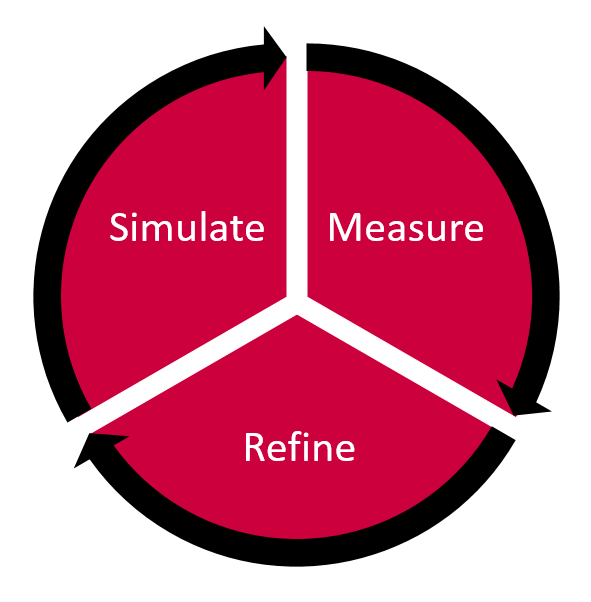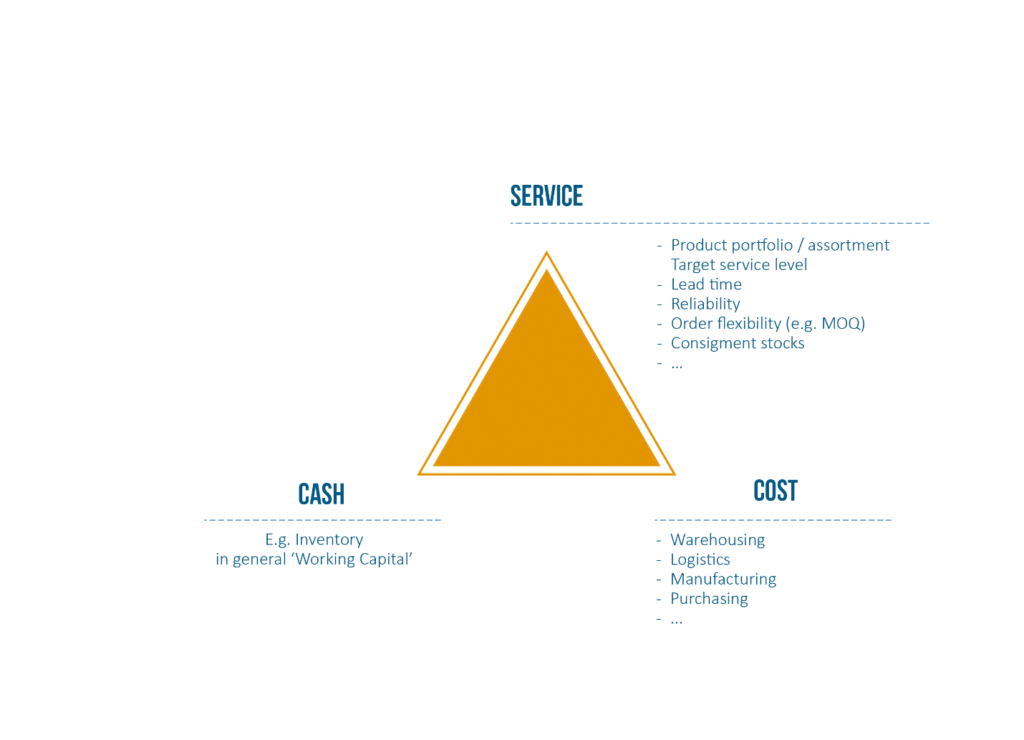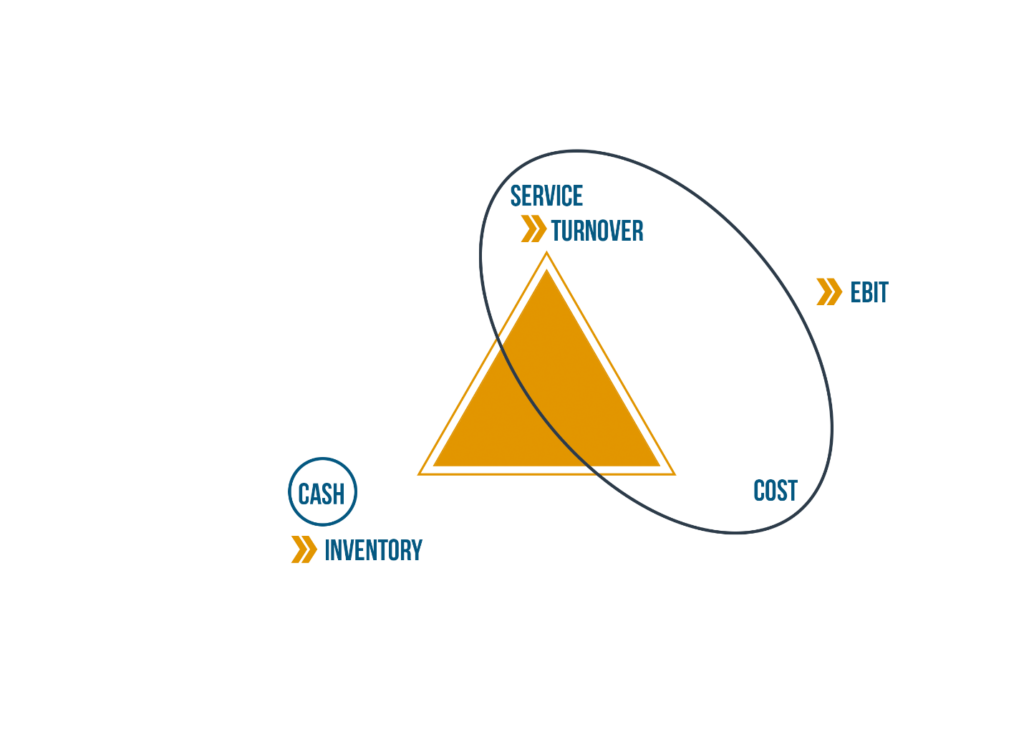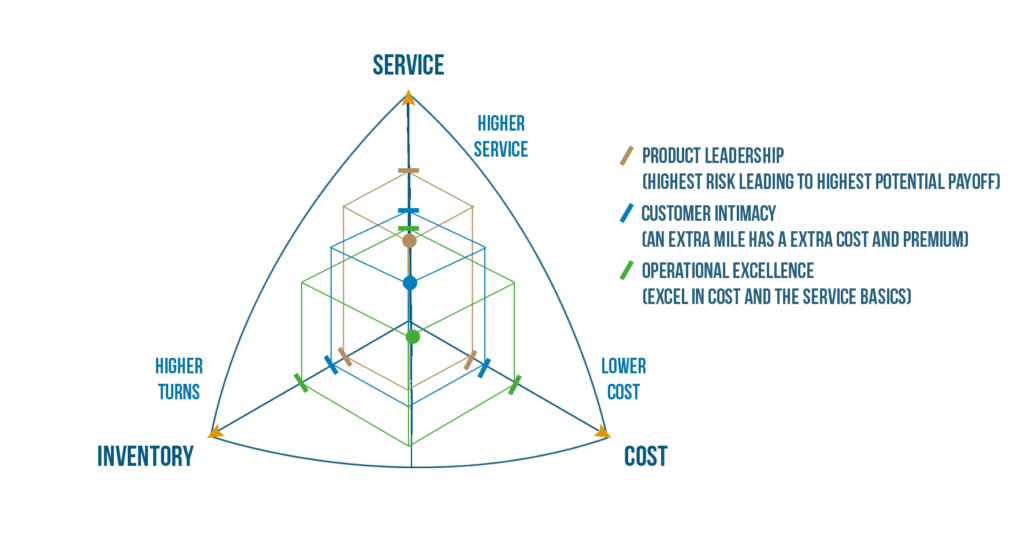
Happy new year! Over the past year, the Arkieva Supply Chain Link Blog provided thought leadership and informative posts on supply chain strategy tips, trends, and news. Just in case you missed some of our supply chain strategy posts, we’ve compiled a list of our popular supply chain posts from 2016 below (ranked based on shares and views). If you’d like to avoid missing a post in the future. Please subscribe here.
Here is a list of the Top 20 Supply Chain Strategy Blog Posts from 2016
1.The ABCDs of an Excellent Supply Chain

In this 2-part Supply chain strategy post, the Managing Director at Solventure – Bram Desmet, discusses the key elements of an excellent supply chain. The second part of the post includes viewpoints from other supply chain professionals. View the full post or view the snippet below:
I think I first heard about supply chain as a phrase in 1998. At the time I was still in grad school rounding up my degree in a non-related field. My initial guess was that the phrase had something to do with the supply of chains (oops!). Later on, I was informed by some of the fellow graduate students that it had to do with getting the right product to the right place at the right time. I remember my first reaction being that it could not be all that difficult? Over the last 16 years of my working at Arkieva, I have been proven wrong many times.
So, as I sit down to write this blog, I wonder what are some of the things that make supply chains excellent? Unfortunately, there is no magic pill or a silver bullet. Excellent supply chains do a lot of little (and not so little) things right. I am sure there is a lot more to the subject than I know. I am hoping to start a discussion by laying down the ABCD(s) of an excellent supply chain. I am hoping others will extend the list all the way to Z.
2. Three Steps to a Better Statistical Forecast Setup

Arkieva COO – Sujit Singh, outlines three essential steps to better statistical forecasting — simulate, measure, refine. View the full post or view the snippet below:
I was talking to a director of demand planning for a big chemical company at a trade show a few months ago. She shared that her business had implemented a statistical forecasting package from one of the leading vendors during the previous year. She further added that after almost 12 months of going live with the project, any improvements in the statistical forecast accuracy were yet to materialize. Understandably, she was pretty low on the value proposition of statistical forecasting.
After a couple of quick questions about the product that she had purchased, it was obvious to me that the product itself had the right features. She commented that the error seemed to be in the way that the software was implemented, and not in the base capability of the software. For example, the software had:
All the right forecast methods
A methodology to pick the best fit method
The ability to forecast in different time buckets
The ability to include causal factors in the forecasting
3. 10 Warehouse Productivity Tips for Reducing Downtime Today!

This guest authored blog post by Kevin Hill, Head of Marketing at Quality Scales Unlimited, discusses 10 ways to improve productivity tips. View the full post or view the snippet below:
If you are a warehouse manager, you would know that handling warehouse operations is not an easy task. It is important to constantly implement ways to optimize the processes and improve the operational effectiveness of the warehouse. Minimizing downtime and increasing productivity are two things that rank high on a warehouse manager’s to-do list.
Here are 10 effective warehouse productivity tips to help you reduce downtime right away.
Plan an Efficient Layout for the Warehouse
Warehouse efficiency directly depends on its layout. Arrange your inventory based on how often you need to use it. If you use certain items frequently, keep them closer to the working or shipping area. Those used less frequently can take up the spaces in the back. It’s also important to remember that a well-organized layout can get disorganized quite quickly, so ensure that the layout is maintained at all times. The right layout will also help in minimizing safety hazards.
4. Balancing Cash, Cost, and Service: The Supply Chain Triangle

Balancing the supply chain triangle of cash, cost, and service is usually the tipping scale between companies with or without improved supply chain processes. In this blog post, Bram Desmet explains how businesses can create a more balanced supply chain triangle. View the full post or view the snippet below:
Over the last 5 years, I have seen many companies launching inventory reduction programs. A common reason is to generate cash. Cash that can be used for new investments to pay back loans or to pay cash dividends to shareholders.
When launching an inventory reduction program, companies should be aware that inventory, as a part of Cash, should always be balanced with Cost and Service. The balancing of these three might be the essence of supply chain management. That’s why I’ve called the corresponding triangle the Supply Chain Triangle.
5. Do You Have a Bimodal Supply Chain?

Gartner defines the Bimodal approach to supply chain management as “the practice of managing two separate but coherent styles of work: one focused on predictability; the other on exploration.” The Bimodal article by Sujit Singh explores Bimodal supply chain differences. View the full post or view the snippet below:
I attended the Gartner conference in Phoenix and heard from many speakers and analysts. The key theme of the conference was that of a bimodal supply chain. For those who did not attend, this phrase might not mean much. In this post, I will try to explain this phrase.
In simple terms, the talk seemed to be that there are two modes of doing business. One mode focuses on doing something steady and has done it for years. They have invested time and money in getting better at how they do things. They typically rely on time-tested tools and techniques and prefer to minimize surprises. They are interested in measuring market share. The companies operating in this mode know their strengths and weaknesses and make money while doing what they do best. The typical approach is conservative. Generally speaking, they are risk averse and try to be predictable and reliable. They tend to move towards following standards and exercise rigorous governance regimes. Any change in this mode seems to be evolutionary in nature.
6. Understanding Today’s Supply Chain Complexity: There’s No Substitute for Hard Work!

In this post, Bram Desmet outlines the three main categories of supply chain complexity — Planning/Sourcing/Making/Delivering, Processes/People/Tools/Analytics, the impact of fast changing technology, increasing market speed and turbulence, attracting and developing talent. View the full post or view the snippet below:
I was lucky to attend the Gartner Supply Chain Executive Conference in Phoenix last May. 1 of the keynote speakers was Mike Duke, the former CEO of Walmart. He summarized his career in 10 pieces of advice he got from 10 key persons throughout his life. His parents, his teacher, his first boss, … Advice #1 received from his parents: “There’s no substitute for hard work.” That resonates with me. To understand today’s supply chain complexity … there is no substitute for hard work!
I can easily see multiple layers of complexity that require time and hard work, to get you through and to bring you to the level of a supply chain professional.
Supply Chain Complexity 1 – Plan/Source/Make/Deliver/…
For anybody who wouldn’t know, Supply Chain is a complex domain because it studies the interactions in a complex and networked system. It tries to connect the suppliers’ supplier to the customers’ customer. It is full of conflicting objectives that need to be balanced in some magical way. As opposed to ‘functions’ like finance, operations, … it is not commonly taught at Universities or in Business Schools. As a result, only the brave survive.
Take the sheer vastness of the planning domain. Our definition of Sales Inventory and Operations Planning (SiOP) at Solventure contains the following steps:
7. Five principles for future Supply Chain Planners

Supply chain planners are tasked with the critical task of aligning demand with supply. In the blog post on the Five Principles for Future Supply Chain Planners, Sujit Singh, explains five key principles supply chain planners should know. View the full post or view the snippet below:
I got the idea for this blog post after reading Shaun Snapp’s LinkedIn post on the topic of big data. In the post, he correctly argues that the case for big data is sometimes exaggerated. Then in the comments section, he went on to explain how the lack of understanding of a particular problem can create the need for grand theories to solve the problem. Very often, this does not solve much. It is a very good post, and I do recommend reading it.
This got me to thinking: What are some key things a supply chain planner should know so that they do not put too much effort in grand theories? I can think of five.
1. Future is uncertain:
It is a fact in general as well is in supply chains, while we can all forecast, calculate or plain old guess what is going to happen, there are no guarantees. It is possible to make a good use of the past data to understand the sale/demand/events that are very likely. But to confuse any of these predictions with any thinking that one has ‘figured it out’ is going to lead to trouble.
Instead, supply chain planners should embrace the uncertainty. They should count on your predictions being at least somewhat wrong and plan for it. They should create shock absorbers by way of safety buffers, be it inventory, capacity or other supplies. They should be more prepared by running what-if scenarios.
8. Can Supply Chain Planners Ignore ROI?

This follow-up blog post provides a cautionary discussion on why ignoring the math behind ROI could be a big a mistake for supply chain planners. View the full post or view the snippet below:
Last week I wrote about my mistake of not paying enough attention to the math behind Return on Investment (ROI). I got a few comments from the readers; the one that caught my eye read something like this: Of course you need to know ROI as you have to sell your software and projects; the supply chain planners on the other hand do not.
While I had intended to say that everyone in the supply chain should learn the ROI math, this comment made me think of elaborating from a Supply Chain planner’s point of view.
Say you are a supply chain planner at a large company. The annual sales of your firm are about $1Billion, and so far you and your team have been able to plan the supply chain with some spreadsheets. Over the years, your team has earned the begrudging respect of the peers as the ones who know what is going on with the business.
9. Supply Chain Planning and an Uncertain Economy

Eric Wilson, Director of Demand Planning at Berry Plastics discusses the issue of how to prepare for bad economies and uncertain times with a good demand planning strategy. View the full post or view the snippet below:
Modern Day Superheroes of Business
The end is nigh; is that a good thing or bad thing? Recent articles have painted a grim picture of an uncertain economy and financial markets in the months to come. Some experts claim we are on the verge of chaos in equity markets, with key indices down over 20%, and bond markets in a panic globally. Dale Davidson, a famed economist who predicted the economy collapse of 1999 and 2007 warns, “Don’t imply that a 50% collapse is looming – it’s already at our doorstep.” Royal Bank of Scotland advises, “Sell everything” because “in a crowded hall, the exit doors are small.” Fortune Magazine asserts, “Here Comes the Biggest Stock Market Crash in a Generation.” Someone even went as far in a Washington Times op-ed to say “It’s worse than 2008, it reassembles 1937…”
Headlines and markets may be important to stockholders, but despite what you may be hearing, business operations are not coming to a terrible end in the next twelve months. If you are a retailer, manufacturer, or distributor, the day-to-day moves in the Dow neither drive nor necessarily reflect the day-to-day operations of your business.
10. Struggling with Multi-Echelon Inventory Adoption

Multi-Echelon Inventory Optimization expert – Bram Desmet outlines how businesses can adopt to multi-echelon inventory optimization and reap the benefits. View the full post or view the snippet below:
I came into the field of supply chain management in 2004. The master project for my MBA program in that period was on ‘Collaborative Planning in the Extended Supply Chain.’ Key questions to be tackled were ‘how do we quantify the benefits,’ ‘how do we create mutual trust.’ The breakthrough of internet technologies was assumed to drive the adoption of CPFR, Collaborative Planning Forecasting, and Replenishment.
2006-2009 I did a Ph.D. on Multi-Echelon Inventory Optimization. It certainly helped me to define the ‘business case’ for collaboration. The basic principle of Multi-Echelon is we need to let go of a ‘local’ or ‘echelon per echelon’ optimization and adopt a ‘holistic’ or ‘network view.’
My Ph.D. was on safety stock optimization. Instead of targeting high service levels from one echelon to the next, and buffering local uncertainties by local safety stocks, you try to regroup uncertainties in a limited number of locations. By letting go of the internal service agreements, you can pool risk and lower the safety stock requirement. It’s counter-intuitive at first, but you don’t want to duplicate safety stocks, right?
11. Will Big Data change the world?

Get quick Insights on how big data could affect your supply chain and business. View the full post or view the snippet below:
“The Death of ‘e’ and the Birth of the Real New Economy,” “Blown to Bits”, … that were some of the books I read when I started my career in IT in the late nineties? Today we face a comparable optimism and belief in Big Data and Manufacturing 3.0. Where the internet was going to take out the middle man and connect enterprises to seamless supply and demand networks, Big Data and Manufacturing 3.0 promise to take out the human interaction. How long will our differentiator, our brain, be replaced by self-learning algorithms, and planted into robots, that will replace our feet and hands.
Not all of the promises of the internet have been realized. Yes, online retail has replaced the street shopping; but in essence, it has transformed the retail function, it hasn’t made the retail function disappear. Yes, information travels faster, we are always connected, but if you look at supply chains, they are still very fragmented: islands of ERP systems, connected by e-mail and excel spreadsheets. In the same way, we can expect that Big Data and Manufacturing 3.0 will transform the way we work, but can we tell in which way?
12. My Biggest Mistake: Inventory Levels are the Thermometer for the Management of the Company

Bram Desmet explains why inventory management and inventory health should be looked at holistically; considering all components of an integrated business plan. View the full post or View the snippet below:
As a Ph.D. in inventory optimization, I’ve started my supply chain career in adjusting inventory parameters with surgical precision. I was, and I still am passionate about applying statistics and advanced analytics to the supply chain domain. I’m still training supply chain experts on how to do this. I’m still involved in research where we redefine the boundaries of what science can do for you. Though I still believe that science can help, my biggest mistake was the assumption that it would be enough to change the game.
With a master mathematics, 5 years of experience in IT and an ongoing MBA, I arrived in the supply chain domain 13 years ago. I immediately felt at home in the more statistical and algorithmic part of supply chain planning. Calculating inventory parameters, using Linear Programming to optimize planning. All of this stuff was new and exciting. I finally understood that some of that math could be applied to real life stuff!
Little did I know at that time, that the surgical precision with which we were changing inventory parameters, was soon to be hit by a tsunami of constraints and influences that were going to annihilate the effect of my brave efforts.
13. My Vision for Supply Chain 2020? Deep Integration!

Supply Chain in 2020 should have the deep integration that includes service, cost, and cash. In this informative blog post and podcast interview, Arkieva partner – Bram Desmet explains why. View the full post or View the snippet below:
Note: the full interview between Lora and Bram is available on Supply Chain Insights podcast.
I was recently interviewed as a blogger for the Global Summit. The question was how I imagine the Supply Chain in 2020. My first thought went to ‘deep integration.’
What strikes me the most when I’m consulting or teaching companies is the lack of integration in today’s supply chains. If I look at retailers, it is still common to have private label suppliers stuffed with inventory, central or regional DC’s stuffed with inventory and shops stuffed with inventories. We all demand high service levels from one step to the next. There seems to be a lack of trust, a lack of transparency, a lack of integration. Seeing this, makes my supply chain heart weep. I was lucky to pursue a Ph.D. in multi-echelon inventory optimization. It is easy to show that instead of buffering risks echelon per echelon, it is better to let go of internal service levels and pool risks on the customer facing echelon. Letting go of the internal service levels also allows optimization of costs and focuses the supply chain on the service level that really counts, which is the one to the final customer.
14. Customer-Product Segmentation Projects in B2B Environments

What are the drivers for customer-product segmentation projects in B2B environments? View the full post or view the snippet below:
I have just started 2 customer-product segmentation projects. Though the companies are in quite different sectors, the drivers for the segmentation and the approach have a striking resemblance with earlier cases.
Drivers for customer-product segmentation
I see 2 main drivers for customer-product segmentation. A first is improving EBIT and working capital by rationalizing the current service and product portfolio. Many B2B environments lack a strong marketing function. Sales is king and tends to do everything to get the sale for their customer. The result can be a service which is spiraling out of control. It’s either supply chain or finance which typically calls that situation to a hold. The situation is the most critical in case of constrained capacity as less profitable products, and customers can run away with the scarce resources.
A second driver is implementing a strategy. As will become clear, a customer-product segmentation, above all, is about defining which products and customers to grow, and which to treat more opportunistically. The guideline here should be the company strategy. A typical sponsor, in this case, is the CEO, who may be frustrated with a business that seems stuck in the old model. For them, a customer-product segmentation is a way to ensure the right trade-offs are made, and the right focus is created.
15. Financial Benchmarking for Inventory Turns and Working Capital

What financial benchmarks should be used to measure inventory turns and working capital? View the full post or view the snippet below:
This blog is a follow-up on 2 earlier blogs ‘Balancing Cash Cost and Service: The Supply Chain Triangle’ and ‘The Best Practice Frontier in the Supply Chain Triangle.’ In those blogs, we have shown there is a lack of alignment when setting targets for the Cash, Cost, and Service in companies. Using so-called orbit charts, we have benchmarked companies on EBIT% versus Inventory Turns. That benchmark helped to reveal the ‘best practice frontier,’ which in turn helped in setting aggressive but aligned targets for EBIT% versus Inventory Turns.
As recaptured in Figure 1, the inventory turns are a measure on the ‘cash’ side of the triangle. The EBIT% is combining the service and the cost dimension. Analyzing how the 2 move together is crucial in coming to aligned targets.
16. A Five-Step Approach to Effective Demand Planning

This informative blog post on demand planning outlines a five-step approach to demand planning. Namely; demand analysis, quantitative forecasting, collaborative planning, performance management, and reviews. View the full post or view the snippet below:
Good handling of market demand data is one of the most vital concepts in any supply chain. The correct management of demand information can greatly influence the level of integration and responsiveness and has a direct impact on customer service and inventory levels. If customer demand is the activating element in the supply chain, it’s quite clear that a multi-step operational supply chain management process to create reliable demand forecasts can play an active role in improving supply chain effectiveness. But how to create powerful demand planning implementation? The five-step approach outlined below provides guidance.
Start with a demand analysis
It’s an old saying: ‘garbage in, garbage out.’ Any forecasting process starts with analyzing and understanding your sales history and cleaning up your dataset. In addition to the typical data cleansing tasks, it’s also important to establish focus, for the forecasting process: which items do we need to review?
17. Biggest Mistake: Ignoring the Math behind ROI

Understanding the ROI in every supply chain project can make a big difference when trying to get executives to buy into supply chain optimization projects. View the full post or view the snippet below:
When I first learned of the phrase supply chain during my grad school days, I thought that it had something to do with the supply of chains! Over the next few years as I started building a career in the field of supply chain planning I did a few things right and a few things wrong. One of the bigger mistakes and perhaps the biggest had to do with my refusal to understand the business level math behind it. For the longest time, I had an aversion to learning the Return on Investment (ROI) that can come from working on a business’s supply chain plans.
Now, I do not want to say that I did not learn any of the math related to supply chains. I invested a bunch of time understanding the different forecasting algorithms, ways to calculate safety stocks and do calculations on material and distribution requirements. I did optimization projects, where one used the math programs to calculate the most profitable or the least cost options to run a business. Being trained as an Engineer, I was naturally drawn to this kind of ‘serious’ math. So, what is the difference between this math and the math that I did not spend time on? Well, let me explain.
18. Customer-Centric Supply Chain Planning: The Difference is in the Details

With customer-centric supply chain planning, businesses need to strive at delighting customers consistently. What are some of the key elements of a customer-centric supply chain planning process? View the full post or View the snippet below:
I was fortunate to join the Arkieva team in strategy sessions with our Belgium team and European partner – Solventure. Since this was my first time visiting Belgium, I couldn’t help but notice the picturesque sceneries, the architecture, and how beautifully meals were presented. I started pondering if the locals saw all the details that I did on my trip on a day-to-day basis. Perhaps if I moved to Belgium, with time the details that I noticed during my trip would be minuscule because they would be the norm.
Similarly, when it comes to customer-centric supply chain planning, technology advancement has led to a heightened customer expectation. At the basic level, a client would expect that orders placed, would be fulfilled quickly, delivered on-time and with no compromise on quality. Therefore, a true customer-centric supply chain initiative will need to go beyond the norm.
19. Linking the Supply Chain Triangle to Strategy

How do you link the elements of the supply chain triangle — service, cost, inventory to your supply chain strategy? View the full post or view the snippet below:
In our 3 previous articles, Balancing Cash Cost and Service: The Supply Chain Triangle, Best Practice Frontier in the 3D Supply Chain Triangle and Financial Benchmarking for Inventory Turns and Working Capital, we have shown there is a lack of alignment for targets on the cash, the cost and the service side of what we have defined as the Supply Chain Triangle. We have looked at the EBIT per inventory $ or per working capital $ to define a best-practice frontier. That frontier can then be used for setting balanced targets on EBIT% versus Inventory Turns or EBIT% versus CCC.
The resulting balanced targets typically pointed in 2 possible directions:
- Either a combined improvement on EBIT% and Inventory Turns (or CCC)
- or a more focused improvement on EBIT% for the current Inventory Turns (or CCC)
As we will now argue, the choice between these 2 is the choice of strategy. To do so, we will map the 3 strategic options proposed by Treacy & Wiersema to the Supply Chain Triangle.
20. 5 Spooky Excel Error Tales That Could Become Your Nightmare

While Microsoft Excel still remains a viable data analysis and reporting tool, it often, relies heavily on manual, error-prone data entry and manipulation. This Halloween themed blog post mentions five Excel error tales that you should be aware of. View the full post or view the snippet below:
This Halloween, while kids dress up in cute costumes to go trick-or-treating and homes gear up with their most ghoulish décor ever, there might be a real life “bogeyman” lurking in the shadows. A serious Excel error could cost a business thousands or millions of dollars. And while this kind of monster may not be hiding under your bed, it can keep you up at night, and even become your worst nightmare.
Hope to share more supply chain strategy post sin 2017. Subscribe for email updates.





